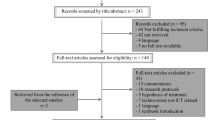Summary
This study is part of a comprehensive multidisciplinary project aimed at determining criteria for retirement ages in municipal occupations in Finland. Musculoskeletal load at work was studied in eight different occupational groups to see what differences between occupational groups exist. A job analysis of the work of 116 subjects was made with the ergonomic job description analysis method (AET). The work of 116 men and women, mean age 52 years, was studied in the work place. The study revealed three levels of overall musculoskeletal load. The groups with high musculoskeletal load worked in installation, auxiliary, home care and transport groups, with an assessed load of on average about one third of the maximal on the AET scale. Both quantitative and qualitative loading problems were concentrated in these groups. In contrast, teaching and administration groups had low musculoskeletal load averaging about 10% of the maximal. The nursing and office groups were between these two levels with a load of approximately 20% of the maximal. However, with the same overall quantity, the quality of the musculoskeletal load varied. In the transport group, monotonous static work with both arms (about 60% of workshift) and legs (30%) was most common, while the musculoskeletal load of the auxiliary and home care groups consisted of heavy dynamic muscular work with arms (60% of workshift) and legs (70%). On the other hand, the administration group alone had a static load of the arms (about 15% of workshift) and legs (2%) and also a low dynamic load with arms (0%) and legs (33%), which could have hypokinetic effects. In conclusion, there are significant differences between the profile groups in both the quantitative and qualitative load of the musculoskeletal system. The differences are even more pronounced when aging employees are studied. These facts support different retirement ages for the profile groups, at least when the musculoskeletal system is concerned.
Similar content being viewed by others
References
Åstrand I (1971) Estimating the energy expenditure of housekeeping activities. Am J Clin Nutr 24:1471–1475
Dehlin O, Grimby G, Svanborg A (1974) Work load in nursing aides. Scand J Rehabil Med 6:145–151
Fordham M, Appenteng K, Goldsmith R (1978) The cost of work in medical nursing. Ergonomics 21:331–342
Ilmarinen J (ed) (1985) Work, health and retirement age in the municipal sector, (In Finnish, abstracts in English) Studies from the Institute of Occupational Health, Helsinki 3:81–282
Karhu O, Härkönen R, Sorvali P, Vepsäläinen P (1981) Observing working postures in industry: Examples of OWAS application. Appl Ergonomics 12:13–17
Karhu O, Kansi P, Kuorinka I (1977) Correcting working postures in industry: a practical method for analysis. Appl Ergonomics 8:199–201
Kivekäs J, Estlander T, Ilmarinen J, Kuusela T, Mäkinen M, Nygård C-H, Riala R, Riihimäki H, Zitting A (1984) Study of construction site cleaners and seamstresses. Employment Pension Fund, Helsinki
Klimmer F, Kylian H, Ilmarinen J, Rutenfranz J (1983) Arbeitsmedizinische und arbeitsphysiologische Untersuchungen bei verschiedenen Tätigkeiten im Bauhauptgewerbe. Arbeitsmed Sozialmed Präventivmed 18:143–147
Knoblich K, Bauer H (1980) Orientierende Untersuchungen zur Herz-Kreislauf-Beanspruchung von Krankenschwester auf einer Intensivtherapiestation. Z Ges Hyg 25:632–633
Kylian H, Rutenfranz J, Löwenthal I, Klimmer F, Knauth P (1981) Arbeitsanforderungen und zeitliche Organisation bei Ladetätigkeiten auf einem Großflughafen. In: Landau K, Rohmert W (eds) Fallbeispiele zur Arbeitsanalyse. Verlag Hans Huber, Bern Stuttgart Wien, S 177–188
Landau K (1978) Das arbeitswissenschaftliche Erhebungsverfahren zur Tätigkeitsanalyse-AET. Doctoral dissertation, University of Darmstadt, FRG
Landau K (1984) Untersuchungen zur Körperhaltung ausgewählter Tätigkeiten in hauswirtschaftlichen Großbetrieben. Hauswirtsch Wiss 32:85–93
Landau K, Reus J (1979) Körperhaltungen bei Tätigkeiten aus Industrie, Verwaltung, Landwirtschaft und Bergbau. Int Arch Occup Environ Health 44:213–231
Landau K, Luczak H, Rohmert W (1976) Clusteranalytische Untersuchungen zum Arbeitswissenschaftlichen Erhebungsbogen zur Tätigkeitsanalyse-AET. Z Arb Wiss 30:31–39 (Abstract in english)
Louhevaara V, Ilmarinen J, Nygård C-H, Pesonen I (1983) Stress and strain in cleaners' work. (in Finnish, abstract in English) Studies from the Institute of Occupational Health, Helsinki 1:34–45
Niskanen T, Merisalo T, Saari J (1981) Study of concrete reinforcement workers and maintenance housepainters. Part 3: Musculoskeletal strain at work. (in Finnish, Abstr in English) Institute of Occupational Health, Helsinki
Rohmert W (1984) Das Belastungs-Beanspruchungs-Konzept. Z Arb Wiss 38:193–200
Rohmert W, Haider E, Landau K (1979a) Entwicklung und Anwendung eines arbeitswissenschaftlichen Erhebungsverfahrens zur Anforderungsbereich Handlung (H-AET). Int Arch Occup Environ Health 43:17–35
Rohmert W, Landau K (1979b) Das arbeitswissenschaftliche Erhebungsverfahren zur Tätig-keitanalyse (AET). Verlag Hans Huber, Bern Stuttgart Wien
Rohmert W, Landau K (1983) A new technique for job analysis, 1st edn. Taylor and Francis Ltd, London
Rohmert W, Rutenfranz J (1975) Arbeitswissenschaftliche Beurteilung der Belastung und Beanspruchung an unterschiedlichen industriellen Arbeitsplätzen. Der Bundesminister für Arbeit und Sozialordnung, Bonn
Rohmert W, Schott R (1974) Körperstellung in Fertigungs-, Kfz-Reparatur- und BergbauBetrieben. Int Arch Arbeitsmed 32:149–165
Rutenfranz J, Löwenthal I, Kylian H, Klimmer F, Flöring R, Gärtner KH, Brockmann W (1980) Arbeitsmedizinische Untersuchungen über Ladearbeiten auf einem Großflughafen. 1. Ergebnisse arbeitsphysiologischer Zeit- und Positionsstudien. Int Arch Occup Environ Health 47:129–141
Saari J, Wickström B (1978) Load on back in concrete reinforcement work. Scand J Work Environ Health [Suppl] 4:13–19
Stubbs DA, Buckle PW, Hudson MP, Rivers PM, Worringham CJ (1983) Back pain in the nursing profession 1. Epidemiology and pilot methodology. Ergonomics 26(8):755–765
Sämann W (1970) Charakteristische Merkmale und Auswirkungen ungünstiger Arbeitshaltungen. Beuth-Vertrieb GmbH, Berlin Köln Frankfurt/M
Author information
Authors and Affiliations
Rights and permissions
About this article
Cite this article
Nygård, C.H., Suurnäkki, T., Landau, K. et al. Musculoskeletal load of municipal employees aged 44 to 58 years in different occupational groups. Int. Arch Occup Environ Heath 59, 251–261 (1987). https://doi.org/10.1007/BF00377737
Received:
Accepted:
Issue Date:
DOI: https://doi.org/10.1007/BF00377737




